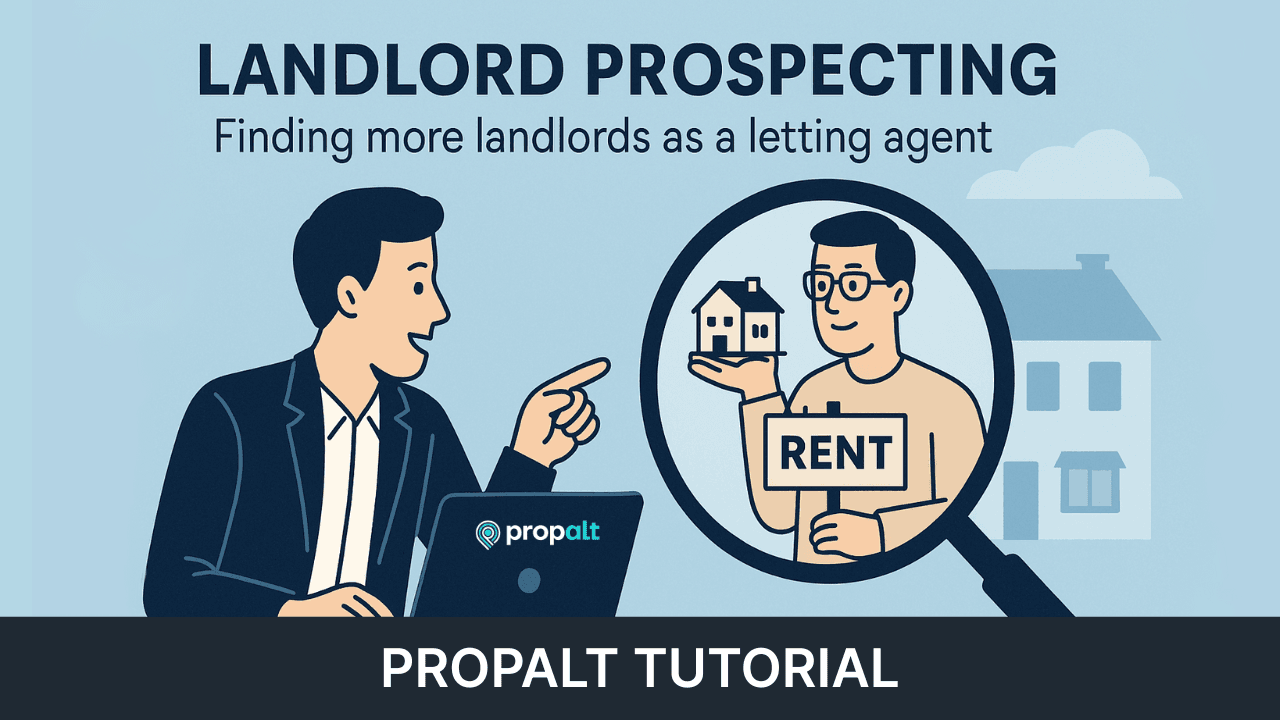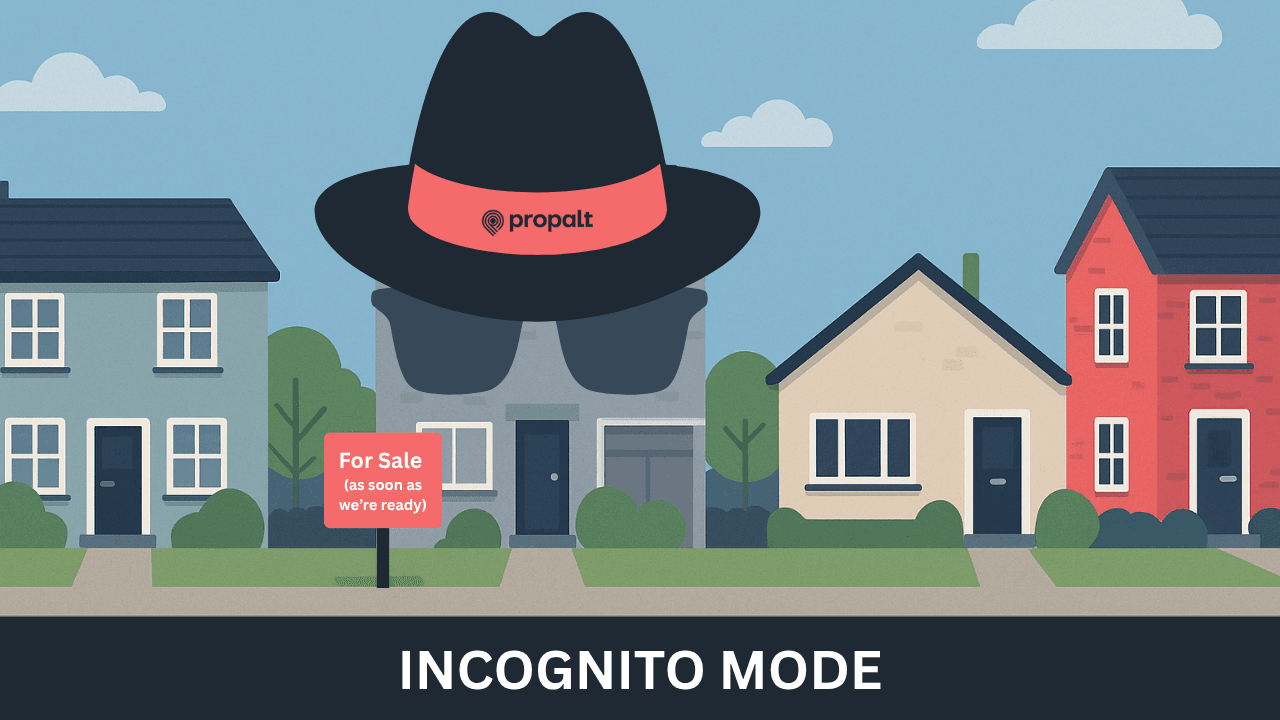

Let’s be honest — some canvassing letters get binned before they’re even opened, you strike gold with others and occasionally, they get pinned to the fridge and acted on months later.
Obviously, we would all like more golden letters.
This blog is for the agents who know canvassing works — but want to get better at it. The ones who are aware of the problem (low response rates), or aware there’s a solution (a better letter), but aren’t quite sure what that looks like yet.
Here’s how to write a letter that actually gets noticed, read, and remembered.
1. Understand Who You’re Talking To
Before you write anything, take a moment to think about the reader. Not just their property — their mindset.
In content marketing, we talk about awareness levels. Your readers fall somewhere on this scale:
- Unaware – People who haven’t thought about moving. They might vaguely remember the name of the agent they bought from years ago. They’re the ones who chuck your letter in the bin — best case, they stick it to the fridge and come back to it in a year. I’ve seen it happen.
- Problem Aware – The window shoppers. Like my dad, who’d always stare into estate agency windows, “just to see what things are selling for.” He wasn’t moving. He was just interested. The “Problem” here, if there even is one, is the value of their property. In fairness, we should consider this group “Value Aware”.
- Solution Aware – These are your switched-on homeowners. They understand what interest rates mean for their mortgage, what local sales mean for their home’s value, and what market shifts mean for their street. They’re the ones who might move soon. I’d call them Market Aware.
- Product Aware – They know who you are. They’ve heard of you, maybe even used you. Let’s call them Estate Agent Aware.
- Most Aware – Actively thinking about moving, or already on the market. They’re looking at listings, doing their research — possibly while you’re reading this blog.
Most agents target the Most Aware — and that’s fine. That’s your on-market canvassing. But what about the others?
If you want a steady pipeline, your letters need to speak to all these people — even if it’s just planting a seed. Just maybe not all awareness levels on the same letter.
2. Match the Message to the Person
Ever sent a letter about your sale of a luxury 5-bed detached home to the owner of a 3-bed semi? It might feel like shouting success — but to the reader, it could feel like you’re rubbing their nose in what their house isn’t.
Worse, do it often enough, and people might assume you only deal in top-end homes. That might be your aim, but let’s not forget — family homes are the bread and butter for most agents.
To this end, “We’ve just sold a Semi-Detached 3 bed with 950 square foot interior, just like yours”, will be far more successful than “we’ve sold a property locally”.
Instead, consider what you’d do if you sold cars? You wouldn’t pitch the sale of a two-year-old BMW to someone who owns a classic car. Your messaging should be just as considered and as luck might have it, filtering your letters based on property type or date since last sold is much easier than what car they drive. [Insert shameless Propalt plug].
3. Tone: Respect the Reader’s Time
Different audiences require different tones.
Mailing large, country homes? The readers are probably older, and more financially stable. Your tone should be respectful, steady, and informative.
Targeting 3-bed semis? Those are busy parents, working all hours. They don’t want waffle — they want value. Get to the point, and make it relevant.
Ask yourself: Are you delivering something useful, or just filling a page?
4. Be Personable — People Buy From People
Selling a home is personal. And people don’t just choose companies — they choose people they trust.
That’s why I always say: put a face to a name.
Include the name and photo of the person who’ll actually be doing the valuation. It builds familiarity and trust before the first call. A letter from Charlie, your local valuer, is miles more effective than one from “The Team”.
In fact, letters from specific team members often act as icebreakers. When Charlie turns up, it’s not a cold intro — the seller already feels like they’ve met him.
5. Branding: Go Bold or Go Home
Yes, we get fewer letters these days than emails — but don’t let that fool you into thinking any letter will stand out.
If your branding has bold colours, use them. Got graphics? Incorporate them, even as a watermark. Known locally? Leverage it.
Recently, I spotted a rock band’s logo on the side of a bus. At the time, I didn’t think I was in the market for live music. Hundreds of busses drive past. I must have seen just as many averts on the side of them this year alone. But this advert stood out because I recognised the logo. Next thing I knew, I was booking tickets.
That’s what good branding does. It cuts through the noise.
At Propalt, we don’t charge users based on how much ink they use. It’s not like asking your mum in the ’90s if you can print something and wincing while she scolds you about how much ink that would use (just me?). So don’t just tuck your logo in a corner. Make the page stand out.
6. Make the Letter Worth Keeping
Every letter you send should aim to provide some value — not just shout about your latest sale.
Is the content useful to the reader? Is it something they might want to keep?
The aim isn’t always immediate action. Sometimes, the best outcome is someone thinking, “Not right now, but I’ll hang on to this.”
I’ve known sellers pin a letter to their fridge for a year before calling. You can’t always measure impact immediately — but you can increase the chance it sticks around.
7. Don't forget your Call To Action:
Let’s say someone reads your letter and thinks,
“That’s interesting.”
That’s nice — but it’s not enough. Admiration doesn’t pick up the phone. You need to make it easy.
For them to take the next step. A simple call to action — whether it’s scanning a QR code to your lead magnet, dropping you a line about the Renters’ Reform Bill, or just having a no-pressure chat about off-market homes — turns passive interest into active intent. Without that nudge, even the best-written letter risks ending up as just another “nice read” in the recycling bin.
Final Thought: Not All Letters Are Equal
If what you’re doing is already working — brilliant. You’re probably not the target audience for this blog.
But if you’re still working out what works best, then it’s worth asking: who are you writing to, what are you saying, and how are you saying it?
Just like this blog — I’ve written it with Problem and Solution Aware agents in mind. Agents who know canvassing is important, but want to do it better. I can’t control who reads this (hello competitors 👋), but I can tailor it to the people I want to speak to.
The same goes for your letters, albeit I don’t have a platform that can make sure my messaging is more likely to reach interested Estate Agents. You however could have Propalt, and with filtering based on property type, or time since last sale, you can improve your odds of reaching an interested vendor quite dramatically.
You might also like

The four easy steps to finding New Landlords with Propalt
Finding new landlords is a crucial aspect of growing a successful letting agency, but it can often feel like a daunting task. With Propalt, you have access to powerful tools and strategies designed to make this process more effective and efficient.

Win the instruction - even when they’re not ready to sell
Dormant Marketing Strategy ...If you’re attending a valuation with one of these sellers, there’s a risk: you leave without an instruction, only a vague promise of “we’ll be in touch once we’ve found something.” Even if they’re sincere, you’re now in a follow-up loop. And meanwhile, another agent could win their trust, find their next home, and take the listing.

Smart Letter-Dropping: A Guide to On-Market Canvassing for Estate and Letting Agents
During the summer, some listings stall. Some agents go on holiday. And some vendors get fed up. That’s where you come in. Here are six practical tips for improving your on-market canvassing strategy.
